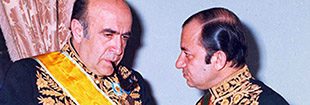ranian television of the 1980s and 1990s underwent a unique transformation in the field of children’s programming. During a time marked by social, political, and cultural changes following the 1979 Islamic Revolution and the Iran–Iraq War (1980–1988), television producers sought to balance entertainment with educational and moral lessons. Out of this movement came a wave of children’s series designed not only to entertain but also to instruct younger audiences in values such as discipline, cooperation, respect for the law, and later, health and hygiene.
Among these, “Mahalle Behdasht” (The Neighborhood of Health), written by the well-known screenwriter Bijan Birang, stands out as one of the most influential productions. It was a direct continuation of Birang’s earlier work, “Mahalle Boro Bia” (The Neighborhood of Come and Go), produced in 1984. While “Mahalle Boro Bia” sought to teach children about the concept of law and civic responsibility, “Mahalle Behdasht” was devoted to health, hygiene, and their relevance in everyday life.
This text will explore the creation, structure, and cultural role of Mahalle Behdasht, examining its characters, songs, educational messages, and broader legacy in Iranian television history. We will also analyze its connection to the social environment of 1980s Iran, the creative collaboration between writers, poets, and composers, and the way it influenced the formation of children’s cultural identity.

